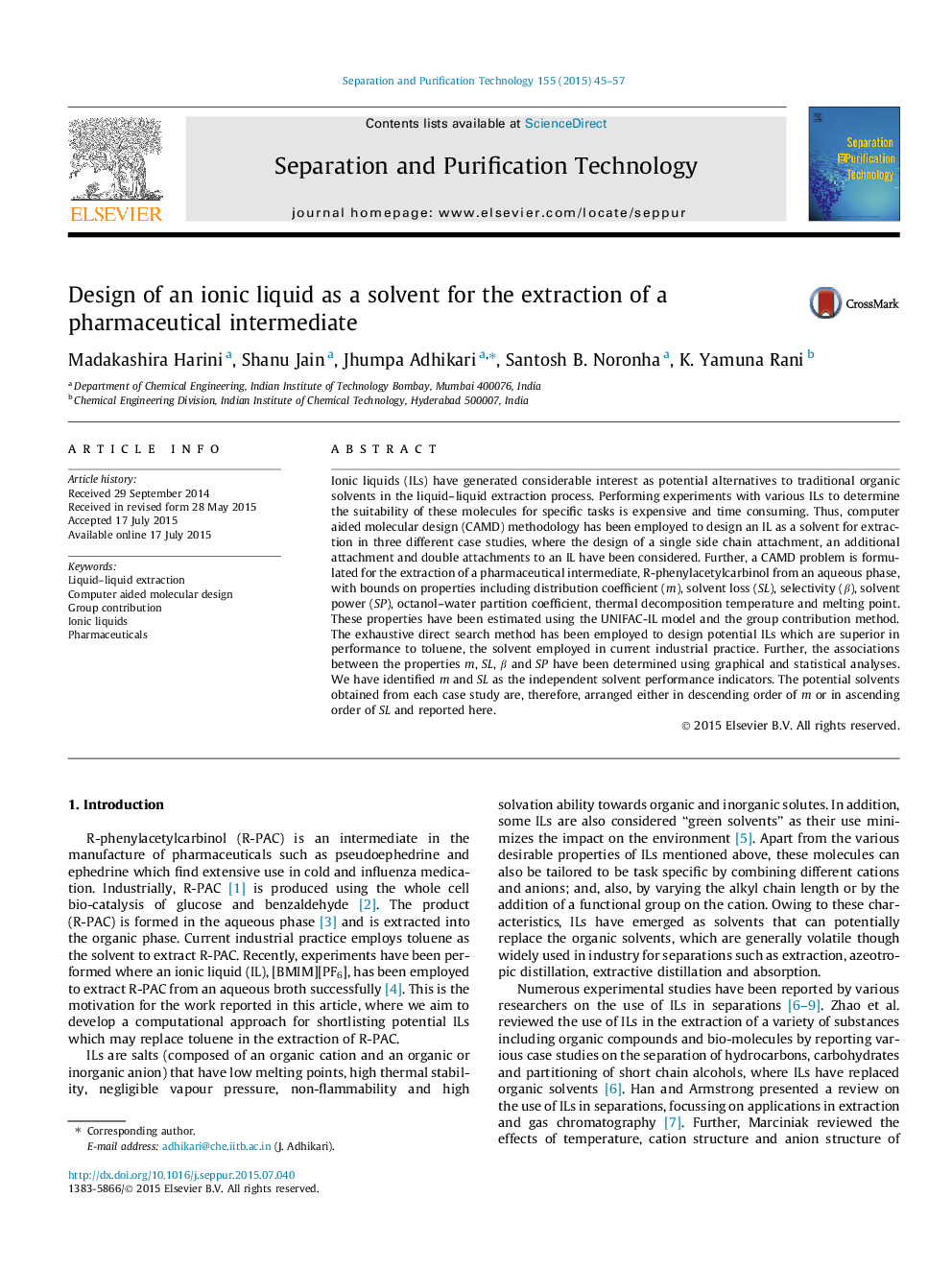| کد مقاله | کد نشریه | سال انتشار | مقاله انگلیسی | نسخه تمام متن |
|---|---|---|---|---|
| 640273 | 1456964 | 2015 | 13 صفحه PDF | دانلود رایگان |
• ILs as potential replacement for toluene in the extraction of R-PAC from an aqueous phase.
• Use of CAMD framework to design task specific ILs for R-PAC extraction.
• Use of exhaustive direct search method with estimation of properties using group contribution methods and UNIFAC-IL model.
• Solvent performance indicators are selectivity, solvent power, distribution coefficient and solvent loss.
• Independent solvent performance indicators have been identified.
Ionic liquids (ILs) have generated considerable interest as potential alternatives to traditional organic solvents in the liquid–liquid extraction process. Performing experiments with various ILs to determine the suitability of these molecules for specific tasks is expensive and time consuming. Thus, computer aided molecular design (CAMD) methodology has been employed to design an IL as a solvent for extraction in three different case studies, where the design of a single side chain attachment, an additional attachment and double attachments to an IL have been considered. Further, a CAMD problem is formulated for the extraction of a pharmaceutical intermediate, R-phenylacetylcarbinol from an aqueous phase, with bounds on properties including distribution coefficient (m), solvent loss (SL), selectivity (β), solvent power (SP), octanol–water partition coefficient, thermal decomposition temperature and melting point. These properties have been estimated using the UNIFAC-IL model and the group contribution method. The exhaustive direct search method has been employed to design potential ILs which are superior in performance to toluene, the solvent employed in current industrial practice. Further, the associations between the properties m, SL, β and SP have been determined using graphical and statistical analyses. We have identified m and SL as the independent solvent performance indicators. The potential solvents obtained from each case study are, therefore, arranged either in descending order of m or in ascending order of SL and reported here.
Journal: Separation and Purification Technology - Volume 155, 26 November 2015, Pages 45–57
